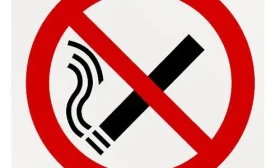Of course, here is the original English article on the requested topic.
We often hear about the dangers of smoking, usually in the context of lung cancer or heart disease. It's a message that has been around for decades. But what if we told you that the damage from cigarette smoke goes much deeper, reaching right down to the microscopic particles that ferry cholesterol through your bloodstream? This is a story about a critical balance in your body, one that smoking profoundly disrupts: the ratio of your high-density lipoprotein (HDL) to your low-density lipoprotein (LDL). Understanding this relationship is key to grasping the full cardiovascular risk posed by tobacco.
To appreciate how smoking throws this system off balance, we first need to understand the main players. Think of your bloodstream as a complex highway system, and lipoproteins as the vehicles transporting vital fats, like cholesterol, to where they are needed.
Low-Density Lipoprotein, or LDL, is often labeled the "bad cholesterol." This is a bit of an oversimplification, as LDL is essential for delivering cholesterol to cells for building membranes and producing hormones. However, when there's too much LDL in the blood, it can become a problem. These particles can seep into the lining of your arteries, become oxidized (a process similar to rusting), and trigger inflammation. This leads to the formation of fatty streaks and, eventually, hardened plaques—a condition known as atherosclerosis. These plaques narrow the arteries, making it harder for blood to flow, and if they rupture, they can cause a heart attack or stroke.
High-Density Lipoprotein, or HDL, has earned the title of "good cholesterol" for its role as a cleanup crew. HDL particles cruise through the bloodstream, picking up excess cholesterol from the arterial walls and tissues and transporting it back to the liver. The liver then processes and excretes this cholesterol. This process is called reverse cholesterol transport, and it's one of the primary reasons why higher levels of HDL are associated with a lower risk of heart disease. It helps keep the arteries clear and functioning properly.
The true danger isn't just high LDL or low HDL in isolation; it's the ratio between them. The LDL/HDL ratio provides a more dynamic picture of your cardiovascular risk than either number alone. A high ratio indicates a dominance of "bad" cholesterol carriers over the "good" ones, meaning more cholesterol is being deposited into your artery walls than is being removed. This creates a perfect environment for atherosclerosis to develop and progress rapidly.
Now, let's introduce the disruptor: cigarette smoke. It's a toxic cocktail of over 7,000 chemicals, and its effects on this delicate lipid balance are both direct and severe.
One of the most significant impacts of smoking is its suppression of HDL cholesterol. Multiple studies have consistently shown that smokers have markedly lower levels of HDL compared to non-smokers. But how does this happen? The mechanisms are complex. The toxins in smoke appear to directly interfere with the production and maturation of HDL particles in the liver. Furthermore, they increase the activity of an enzyme called cholesteryl ester transfer protein (CETP), which promotes the transfer of cholesterol from protective HDL to atherogenic LDL and other particles, effectively reducing HDL's quantity and quality. It's like decommissioning your fleet of cleanup vehicles.
While smoking's effect on lowering HDL is its most pronounced action, it doesn't let LDL off the hook. Research indicates that smokers often have higher levels of LDL cholesterol. The oxidative stress caused by smoke free radicals directly modifies LDL particles, making them more likely to be recognized as "foreign" by immune cells in the artery wall. These oxidized LDL particles are consumed by macrophages, turning them into "foam cells"—the hallmark of early atherosclerotic plaques. So, not only does smoking increase the number of "bad" trucks on the highway, it also makes them more dangerous and sticky.
The damage doesn't stop with HDL and LDL. Smoking also has a detrimental effect on other blood fats, namely triglycerides. It's common to see elevated triglyceride levels in smokers. High triglycerides often go hand-in-hand with low HDL levels, creating a particularly risky lipid profile. This combination further tilts the LDL/HDL ratio into dangerous territory and contributes to overall cardiovascular inflammation.
The degree of lipoprotein abnormality is not uniform across all smokers; it's a dose-dependent relationship. This means the more you smoke and the longer you smoke, the worse the imbalance becomes.
The number of cigarettes you smoke per day directly correlates with the extent of HDL suppression and the worsening of your LDL/HDL ratio. A person smoking two packs a day will likely have a more adverse lipid profile than someone smoking half a pack. Each cigarette introduces a fresh wave of toxins, continuously hampering your body's ability to maintain a healthy cholesterol balance.
Duration matters just as much as intensity. Long-term smoking leads to cumulative damage. The body's repair mechanisms become overwhelmed over years of exposure. This is why a long-term smoker, even if they currently smoke less, may still have a significantly abnormal ratio compared to a new smoker. The damage to the vascular system and lipid regulation pathways becomes more entrenched.
It's crucial to understand that this isn't just a number on a lab report. This biochemical imbalance has very real and serious consequences for your health.
An abnormal LDL/HDL ratio is a primary driver of atherosclerosis. As we've discussed, with high levels of harmful LDL and low levels of protective HDL, plaque builds up relentlessly. This narrows the coronary arteries, which supply blood to the heart muscle itself. This can lead to chest pain (angina) and, ultimately, a myocardial infarction, or heart attack, when blood flow is completely blocked.
The same process that causes coronary artery disease also affects the arteries supplying the brain. A clot formed from a ruptured plaque can travel to the brain, causing an ischemic stroke. The reduced blood flow from narrowed arteries can also lead to transient ischemic attacks (TIAs), or "mini-stokes."
The incredible news is that this damage is not necessarily permanent. The human body has a remarkable capacity to heal, especially when the offending agent is removed. Quitting smoking initiates a process of recovery that begins almost immediately and continues for years.
The benefits for your lipid profile start quickly. Research shows that HDL levels begin to rebound within just a few weeks of quitting. This is one of the fastest positive changes to occur after stopping smoking. As the constant barrage of toxins ceases, the liver can resume normal production and processing of HDL, allowing the "good cholesterol" to return to healthier levels.
Over the longer term, the entire lipid profile continues to improve. While HDL shows the most dramatic recovery, LDL levels and triglycerides also tend to move in a healthier direction. The oxidative stress on LDL particles decreases, making them less likely to contribute to plaque. Within one to two years of quitting, a former smoker's cardiovascular risk drops significantly, and within five to fifteen years, their risk of stroke and coronary heart disease can approach that of a person who never smoked.
Knowing your numbers is the first step toward taking control. A simple blood test, called a lipid panel or lipid profile, can reveal your total cholesterol, LDL, HDL, and triglyceride levels. From this, your LDL/HDL ratio can be calculated. Discuss these results with your healthcare provider to understand your personal risk and what the numbers mean for you.
If you smoke, the single most effective action you can take for your heart and lipid health is to quit. It can be challenging, but you don't have to do it alone. Seek support from smoking cessation programs, counseling, or your doctor, who can recommend medications or therapies to help you succeed.
Complement your quitting journey with other heart-healthy lifestyle choices. Adopting a diet rich in fruits, vegetables, whole grains, and healthy fats (like those in olive oil and avocados) can actively help improve your lipid levels. Regular physical activity is a powerful tool for raising HDL and lowering LDL and triglycerides. Even modest weight loss, if needed, can have a profoundly positive impact on your overall lipid profile.

The connection between smoking and an abnormal LDL/HDL ratio is clear, direct, and deeply concerning. By lowering your good HDL, raising your bad LDL, and creating a more inflammatory environment, smoking actively undermines one of your body's most critical defense systems against heart disease. However, this story has a hopeful ending. By choosing to quit, you set in motion a powerful reversal of this damage, giving your body the chance to restore balance, repair itself, and drastically reduce your risk of life-threatening cardiovascular events. The power to change your lipid profile and protect your future health is, ultimately, in your hands.












